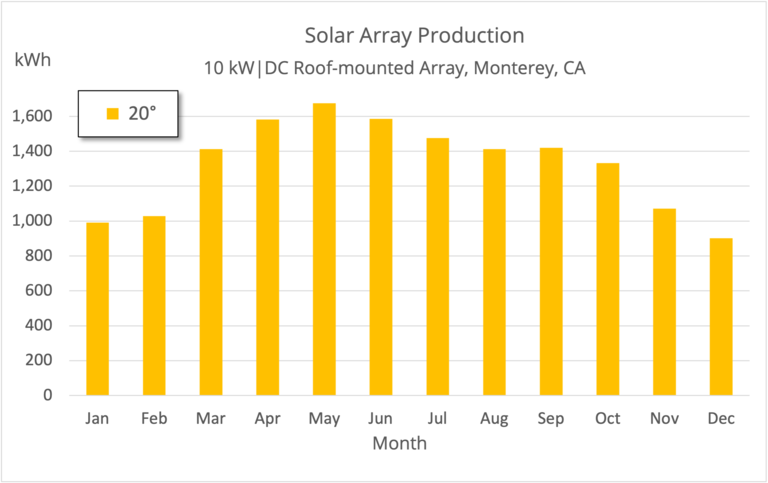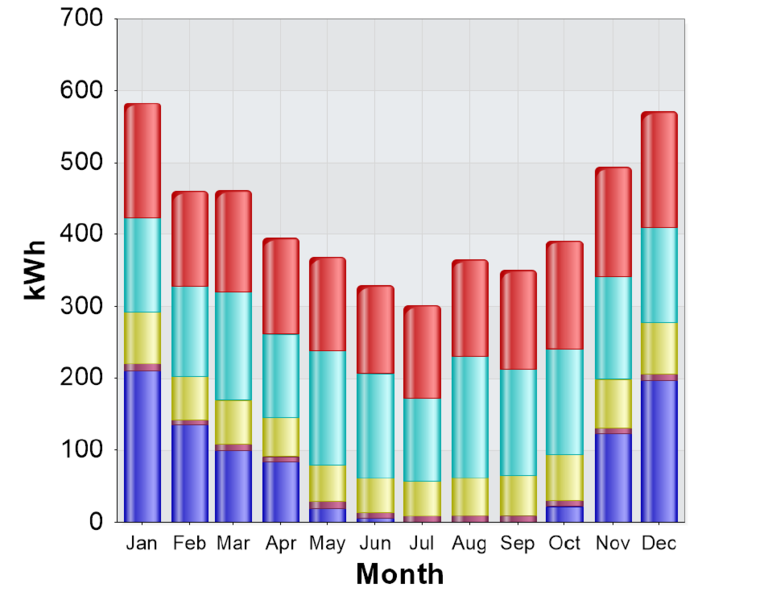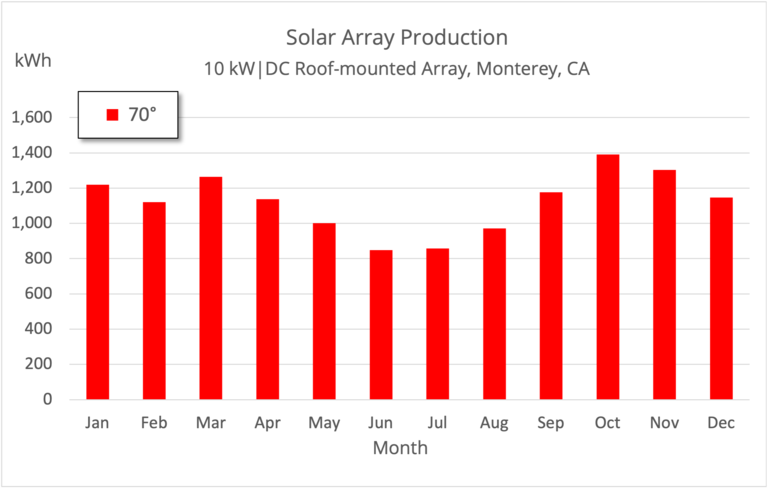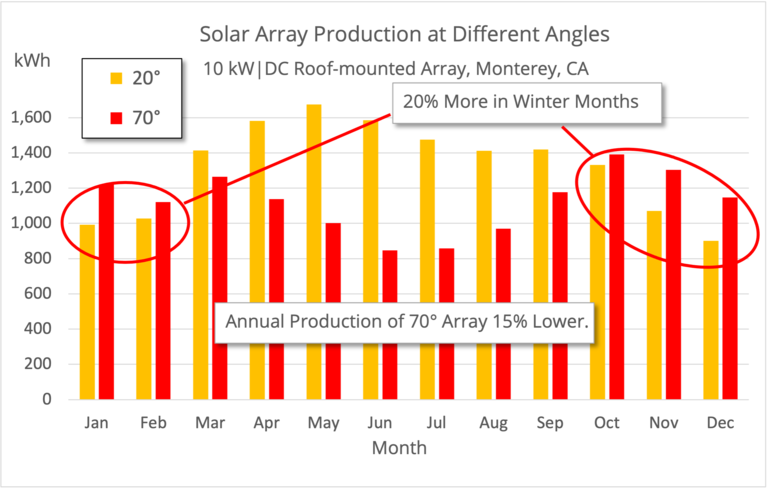Nearly Vertical Solar Panels | What Sounds Crazy Can Make a Lot of Sense
Maximizing Energy Production in the Year. When residential rooftop solar started, the goal was to produce as much solar energy as possible. In the early 2000s, a single 125 Watt solar panel cost $1,000, and the focus was on maximizing solar energy production during the year.
A solar panel produces the highest amount of solar energy annually when mounted facing south* at a tilt equal to the latitude of the location where the solar array is installed. (*or north in the southern hemisphere)
For Monterey, CA, where many of our new customers are, that tilt would be 36.6°. This is a relatively steep angle, and most roofs in Northern California have a lower pitch, about 20°. Many arrays are mounted at about that tilt. So for reference, here is what the monthly production for a 10 kW array mounted at 180° (south) and a tilt of 20° in Monterey looks like.
As expected, the solar array produces most of its energy in the summer.

Optimizing Energy Production to Meet Load. Now, most of our customers are trying to rely on the grid or generator power as little as possible and want to meet all of their energy needs from solar. But there can be a challenge. In Monterey, homes typically consume more electricity in the winter than in the summer. Below is the load profile of one of our customers near Monterey. The various colors indicate different types of loads. Blue is electricity consumption related to heating.

The shape of the load is almost inversely related to that of solar production, which peaks in the summer. What to do?
It is not practical to store electricity seasonally. But when solar panels are tilted more steeply, their seasonal energy production changes. Below is the solar production of the same array shown above when mounted at 70°.

That looks a lot better. Solar production matches the load more closely.

The comparison of the two monthly production profiles, with the array at 20° and 70°, shows that the annual production is reduced by 15% when panels are mounted at 70°. But during the winter, when the load is higher, solar output is up 20%.
Where and how do you mount panels at 70°? The answer to this differs from home to home, but we have found creative solutions with our customers. In two cases, a retaining wall proved to be the right place for the panels. In other cases, the only solution was to oversize the solar array to have enough energy in the winter.
A New Paradigm for Solar. The kind of optimization that YouSolar does for the solar production and load for its customers is also needed for grid-tied solar. As solar penetration on the grid increases, the idea of maximizing solar energy on the roof and letting the utilities handle it no longer works. Residential solar batteries can store energy mid-day and deliver in the evening when load peaks. But this does not work seasonally.
Ideally, electricity prices will signal not just during what hour of the day but also during which day of the year electricity is valuable to the power system. The result will be that home and business owners, as well as their architects and builders, will become much more creative about where and how to place solar panels. YouSolar is already doing this with its customers today.
